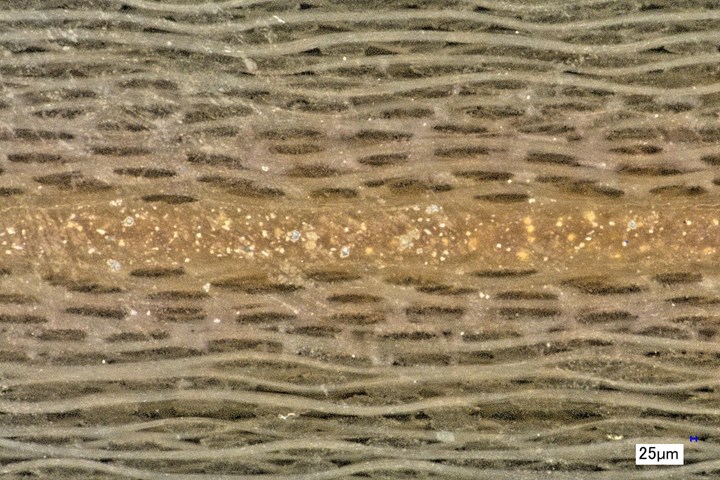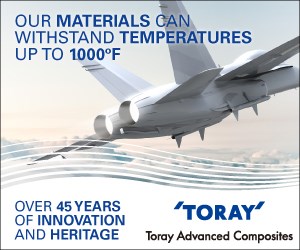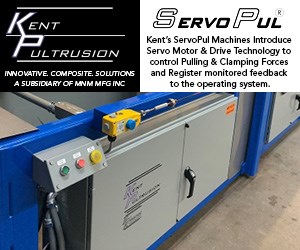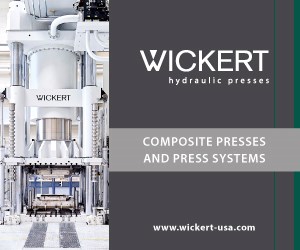Solvay expands range of FusePly covalent bonding for composite structures
FusePly 250 technology, designed for 250°F to 350°F composite bonding, offers optimized bond reliability and high part performance.
Microscopic view of FusePly resin (at the interface with prepreg and adhesive) ingressing into the composite panel during co-cure (as indicated by discolored composite layers) and delivering a chemically bonded interface between FusePly and adhesive. Photo Credit: Solvay
Solvay (Alpharetta, Ga., U.S.) has expanded its range of FusePly chemical bonding technology with a second product, FusePly 250, designed to bond composite structures at 250°F and higher. The new product complements the previous FusePly 100 grade, introduced in 2018 which has now been renamed FusePly 350 to reflect its compatibility with 350°F cure film adhesives. Both grades offer step-change bonding performance and durability and can easily be integrated into existing manufacturing processes as an upgrade for traditional surface preparation methods.
Solvay reports that FusePly is a breakthrough composite bonding technology resulting in covalent bonds between adhesives and composite structures. While it handles and processes like a conventional peel ply product, it creates a reliable chemically functionalized composite surface which eliminates time- and labor-intensive surface preparation steps and assembly processes.
“The reliability and robustness of bonded structures are a top priority for users of composites in safety-critical applications in aerospace and other demanding markets” says Stephen Heinz, VP research and innovation for Solvay’s global Composite Materials business unit. “We developed FusePly, a fundamentally new bonding approach, to meet the needs of leading aircraft OEMs and enable them to take full advantage of composites for lighter, stronger structures.”
Related Content
-
Materials & Processes: Fabrication methods
There are numerous methods for fabricating composite components. Selection of a method for a particular part, therefore, will depend on the materials, the part design and end-use or application. Here's a guide to selection.
-
Plant tour: Spirit AeroSystems, Belfast, Northern Ireland, U.K.
Purpose-built facility employs resin transfer infusion (RTI) and assembly technology to manufacture today’s composite A220 wings, and prepares for future new programs and production ramp-ups.
-
A new era for ceramic matrix composites
CMC is expanding, with new fiber production in Europe, faster processes and higher temperature materials enabling applications for industry, hypersonics and New Space.














